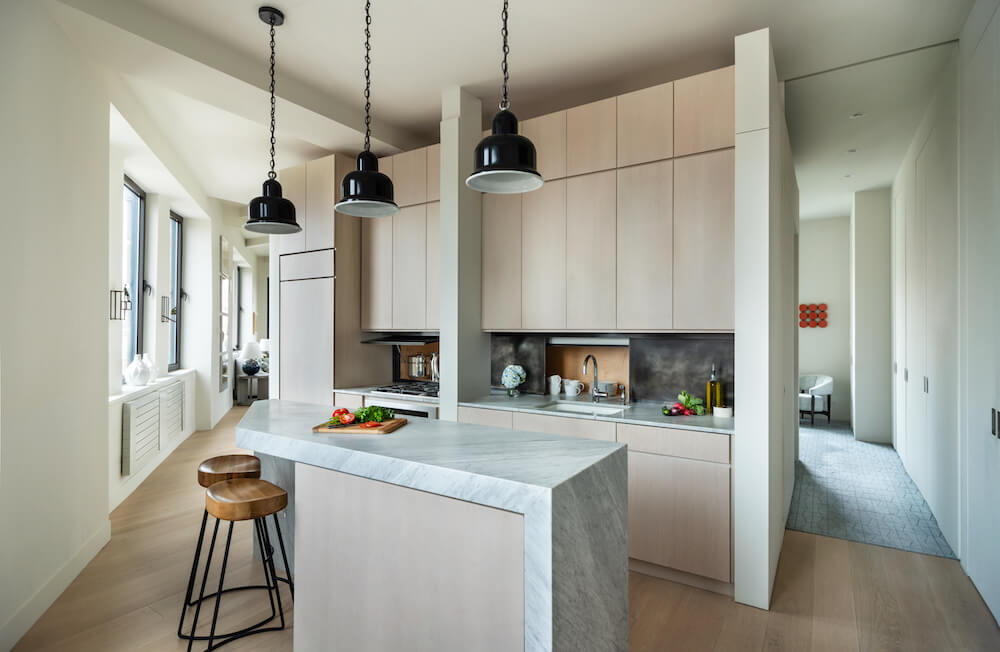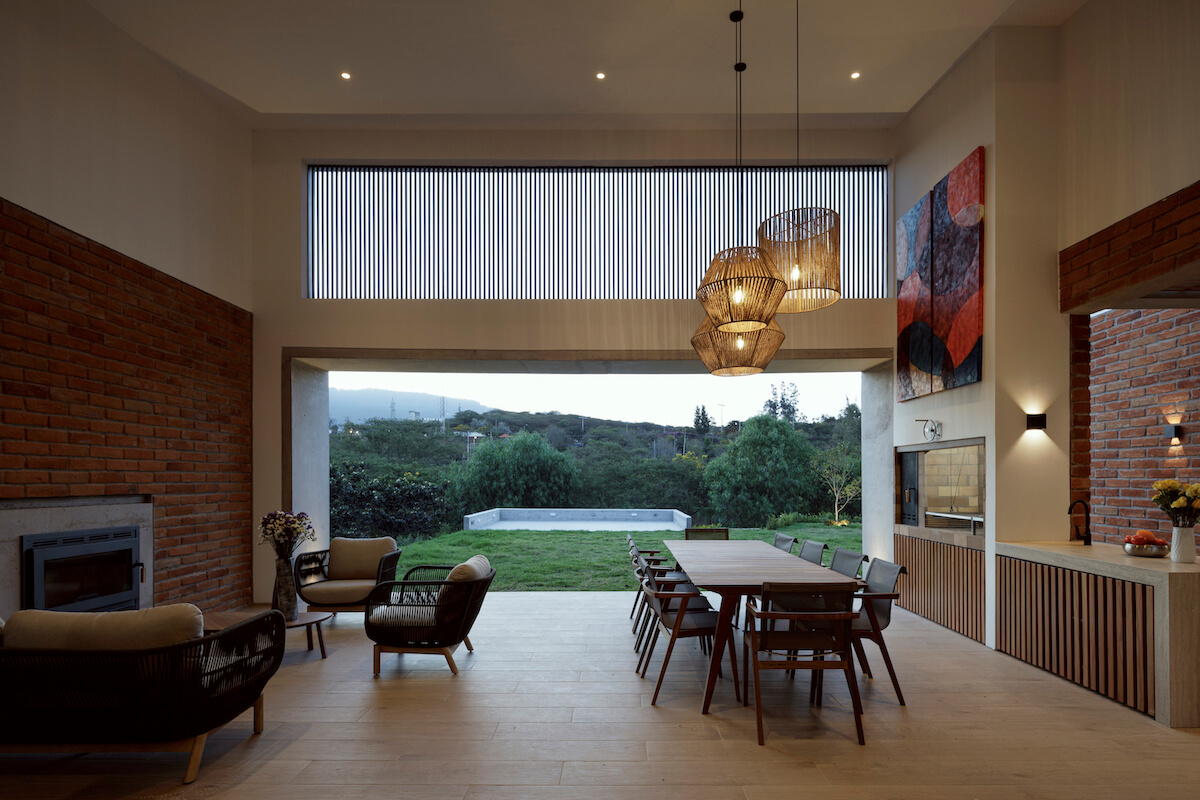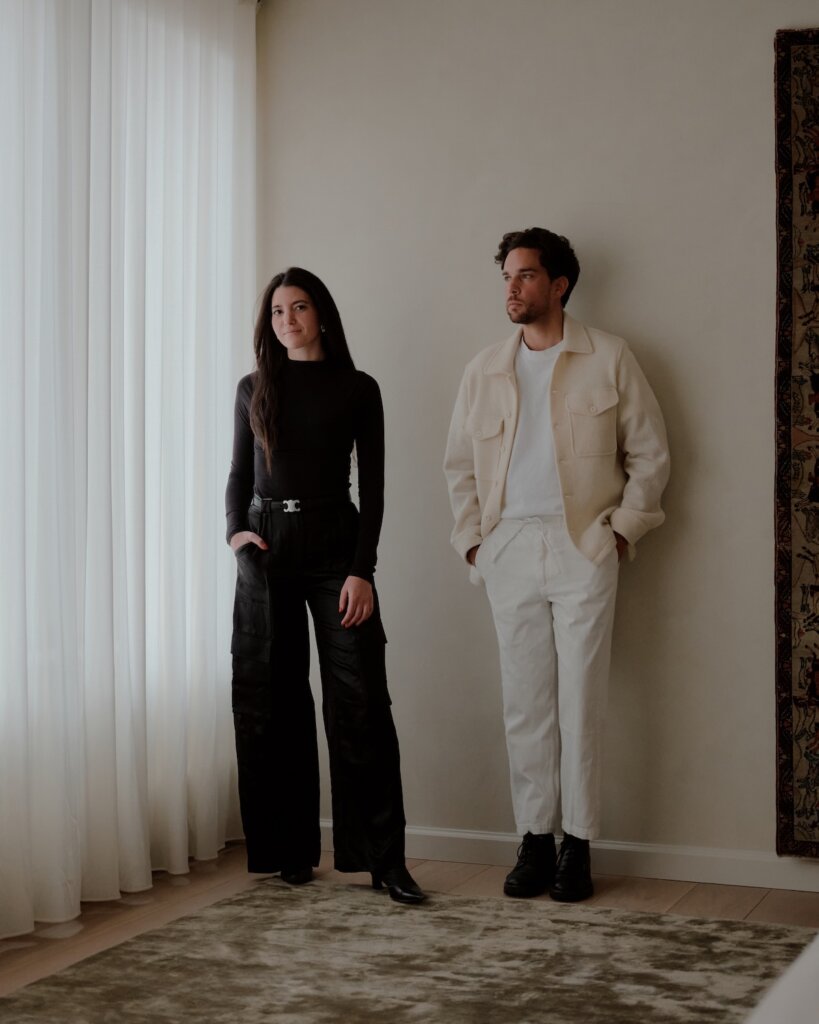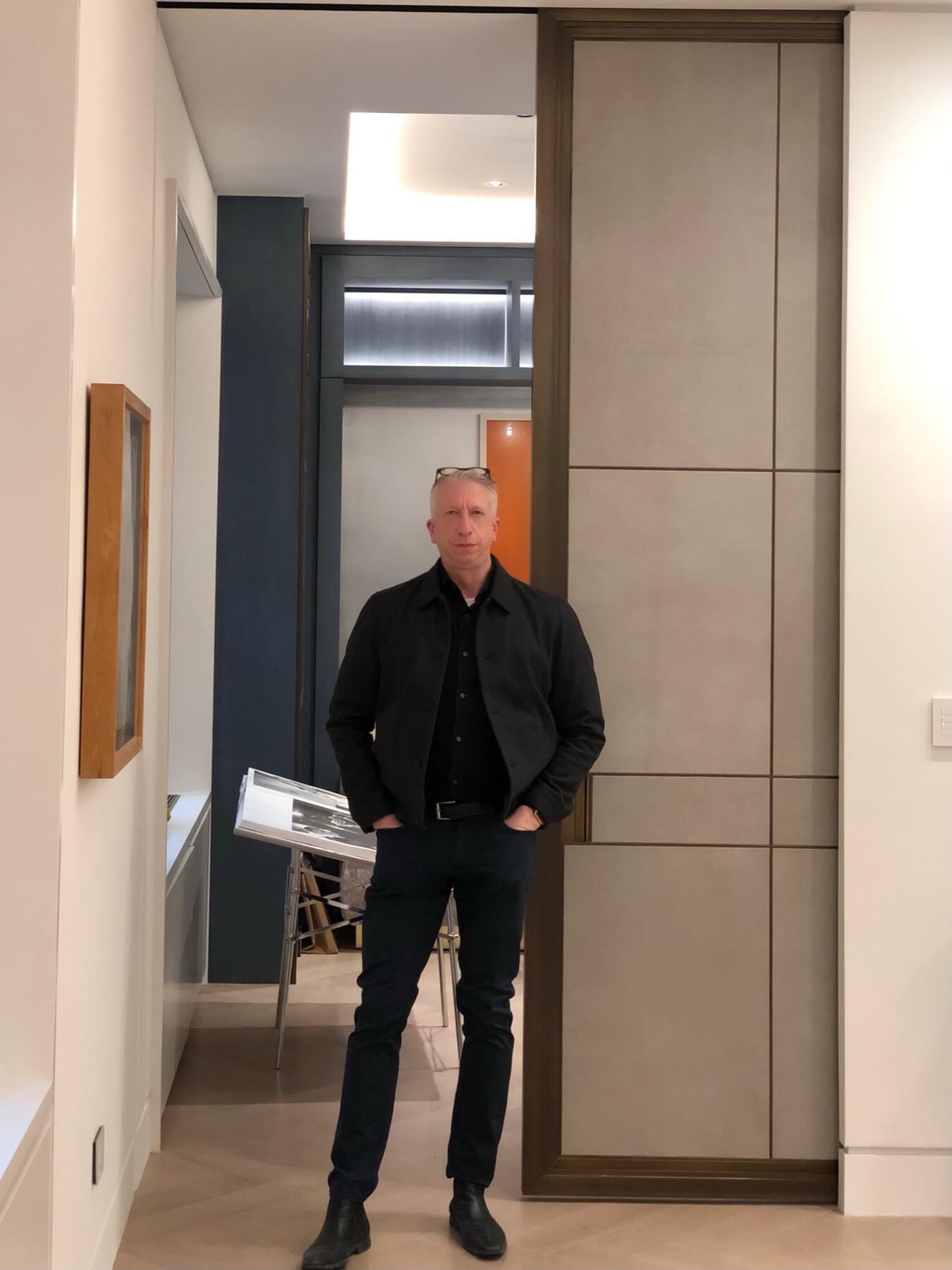
Philip J. Consalvo, AIA, established PJCArchitecture in 1998 with a vision to create an organization that fosters creativity and collaboration. With a deeply-held conviction that good design is for all, Philip has completed renovations and construction projects for residential, corporate, commercial, and non-profit clients across a range of budgets, approaching each with an unwavering attention to detail. Philip’s personal involvement in all phases of the firm’s work helps to foster the innovative design solutions that PJCArchitecture has come to be known for. Deeply committed to ensuring that client goals maintain an integral part of the design process, Philip brings in a sensitivity to the environment that ensures the client’s spaces endure and grow alongside them.
When you were a kid, what did you dream of becoming? Did any of those childhood ambitions lead you to where you are today?
I knew I wanted to be an architect as young as grade school—it’s even in my 5th grade yearbook! I was always drawing houses and buildings as a child, maybe as an escape, or maybe I just wanted to be like architect-dad Mike Brady from The Brady Bunch. After all, who wouldn’t want to live in a cool house with an open-tread staircase and an avocado-and-orange kitchen?
Is there a particular designer, artwork, or design movement that deeply inspires you? How has it influenced your own style or philosophy?
There are two architects whose work I find deeply inspiring are Carlo Scarpa and Tadao Ando. Although they come from very different cultural backgrounds—Italy and Japan—they share several core principles in their philosophies and design approaches. Both demonstrate a profound respect for craftsmanship and materials, and each carefully considers the interplay of natural light and shadow. Their work creates a dialogue between past and present, while emphasizing spatial experience and the movement through spaces. Their architecture embodies a poetic minimalism enriched with intricate detail, always maintaining a strong connection to nature. Above all, both architects treat architecture as a sensory, emotional, and cultural experience, not merely as functional buildings.
How would you describe your design philosophy? Has it evolved over time, and if so, how?
My philosophy has always been about blending beauty with simplicity, function, and sustainability. Of course, every project is tailored to meet the distinct style and needs of each client, but clean lines and a timeless palette continue to characterize our work.
Since founding PJCArchitecture, we’ve built a concentrated client base in NYC, leading us to prioritize maximizing every inch of space. We’ve learned to get quite creative, building custom solutions that allow spaces to function as beautifully as they look. Even as we’ve grown our portfolio with new builds, single-family renovations, and commercial spaces internationally, we find ourselves bringing bespoke elements that synthesize storage, aesthetic, and functional needs. It’s become a fun design challenge that we revel in no matter the project.
Overall, my goal has always been to create inviting spaces that reflect our clients’ personal styles while positively impacting the built environment on a macro level. This will always be the driving force of our work.
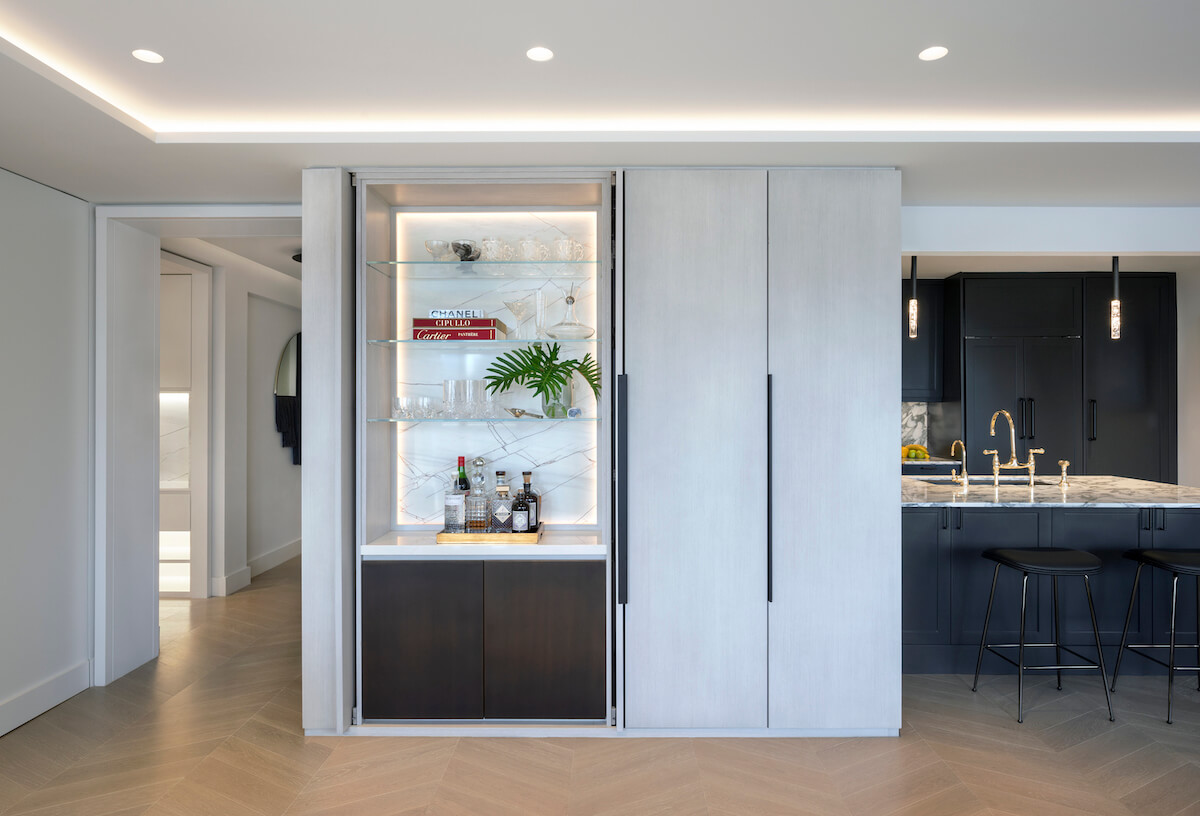
West 79th Street Apartment Project by PJCArchitecture (photo credit: Bjorg Manea Architectural Photography)
Tell us a bit about where you live: How long have you been there, and how does your environment shape your creative process?
I have lived in the Greenwich Village neighborhood of Manhattan for over 30 years. The Village is steeped in history, culture, and a strong sense of community, all of which naturally foster creativity. It’s a place that has always welcomed bold ideas and artistic expression, offering constant inspiration. Living here provides all the advantages of a big city—diversity, vibrant arts, and endless opportunities—yet the Village retains a human scale and genuine neighborhood feel. It’s a true refuge within the fast-paced energy of New York City.
My experience in the Village has continually reinforced my belief that architecture serves a greater purpose: to support community, encourage social interaction, and enhance the quality of life through beauty and thoughtful aesthetics.
Which of your projects or products are you most proud of, and what makes them stand out for you?
A few of our recent single-family projects stand out because they gave us the opportunity to bring a fresh interpretation to a region’s vernacular style.
In Indian Lake, New York, we leaned into the Adirondack architectural style with a pitched roof, wood siding, and stone walls. We added a modern spin by introducing “Shou Sugi Ban” siding, an eco-friendly material that helps the home blend in with its natural surroundings. The charred wood, paired with clean architectural details, adds contemporary refinement while still leaning into the pastoral lakeside surroundings.
Another favorite is a 700-square-foot tiny house in Napoles, Ecuador. The project is a true embrace of simplicity, where we used only four materials—brick, steel, concrete, and glass. The natural materials were all locally sourced, and we worked with a local building crew. It was a fun exercise working with an international team, where many of the design ideas were implemented on site and in response to the availability of construction materials, with many quick pivots! While the home was built with construction techniques that have been used in Ecuador since the time of the Incas, the result is a fresh and modern home.
In your opinion, what is the most significant challenge facing the design world today? How do you think designers should respond to it?
One of the biggest challenges for designers today is synthesizing the many parameters of a project, from the location and budget to scope and client needs. It takes a balance of creativity, problem-solving, and adaptability, not to mention constant communication and project management skills to keep everything on track!
At PJCArchitecture, we are deeply committed to creating environmentally responsible designs, which can complicate things further. We welcome the challenge, however, knowing that the results not only reflect our core values but also enhance our clients’ well-being and contribute to a healthier planet. It often requires extra time and care to educate clients, source sustainable materials within budget, all while balancing aesthetics with function, but when it all comes together, the outcome is all the more rewarding.
What’s on the horizon for you? Any upcoming projects, events, or goals you’re particularly looking forward to?
Looking ahead, I would love to work on a community-oriented project with an opportunity to make a social, environmental, and cultural impact. Our world is facing many challenges, and I’d love the opportunity to benefit the collective with more healthy, safe, and nurturing spaces for the benefit of present and future generations.
We’re also excited to be expanding our firm’s presence to South Florida! We are now proudly serving clients throughout Miami, Fort Lauderdale, and Palm Beach and looking forward to kicking off with new projects that bring climate-responsive, sustainable design to a new region.
What’s a favorite movie, band, or song that has inspired or shaped your creative mind?
All of the arts feel deeply connected to me, making it hard to single out just one source of inspiration. However, a film that stands out is The Tree of Life by Terrence Malick. It explores themes of creation, memory, time, and the search for meaning—concepts that resonate strongly with design and architecture. The movie is inspiring on many levels: it is visually stunning and reflects the idea of creating meaning through form, light, time, and memory, much like architecture and design at their finest.
Visit the PCJArchitecture Website here >>>
More from ICFF:
Launch Pad: Where Emerging Designers Shape Their Future
Beyond the Design: Crafting the Senses Behind the Bespoke Salon
